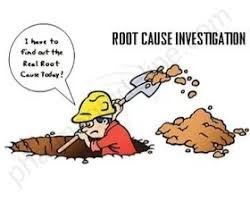Critical Mistakes during Root Cause Investigation

Critical Mistakes During Root Cause Investigation (RCI)
Root Cause Investigation (RCI) is an essential step in pharmaceutical quality systems to identify, analyze, and eliminate the underlying causes of deviations, OOS, failures, or non-conformances. However, many investigations fail due to recurring mistakes:
1. Superficial Analysis
-
Jumping to conclusions without proper evidence.
-
Stopping at the “symptom” instead of digging deeper into the actual cause.
2. Lack of Structured Tools
-
Not using systematic investigation tools such as 5 Whys, Fishbone Diagram (Ishikawa), Fault Tree Analysis, or Pareto.
-
Reliance only on personal judgment instead of data-driven analysis.
3. Inadequate Data Collection
-
Missing or incomplete records.
-
Failure to review all related documents, instruments, logs, or environmental data.
4. Confirmation Bias
-
Investigators assuming a cause too early and searching only for evidence to support their assumption.
-
Ignoring alternative possibilities.
5. Not Involving the Right Experts
-
Excluding cross-functional teams (QA, Production, QC, Engineering).
-
Relying only on one department’s perspective.
6. Ignoring Human Factors
-
Focusing only on equipment or process issues while neglecting training gaps, workload, fatigue, or cultural factors.
7. Treating Symptoms Instead of Causes
-
Implementing quick fixes (e.g., re-testing, re-sampling) instead of addressing systemic problems.
8. Poor Documentation
-
Vague, non-specific statements like “human error” or “operator mistake” without evidence.
-
Incomplete investigation reports that fail to stand up to regulatory scrutiny.
9. Lack of Timeliness
-
Delays in starting or completing investigations, leading to memory lapses, missing data, and regulatory risk.
10. Weak or Ineffective CAPA
-
CAPAs that are not measurable, realistic, or sustainable.
-
No follow-up or effectiveness checks, leading to recurrence of the issue.
✅ Key Takeaway:
Effective root cause investigation requires structured analysis, cross-functional collaboration, unbiased thinking, and strong documentation. Avoiding these mistakes ensures compliance, prevents recurrence, and strengthens the pharmaceutical quality system.
🎓 Discover one of the best Complete Pharmaceutical Quality Assurance Course available —click below to explore the course that’s shaping future in QA Course skills.

